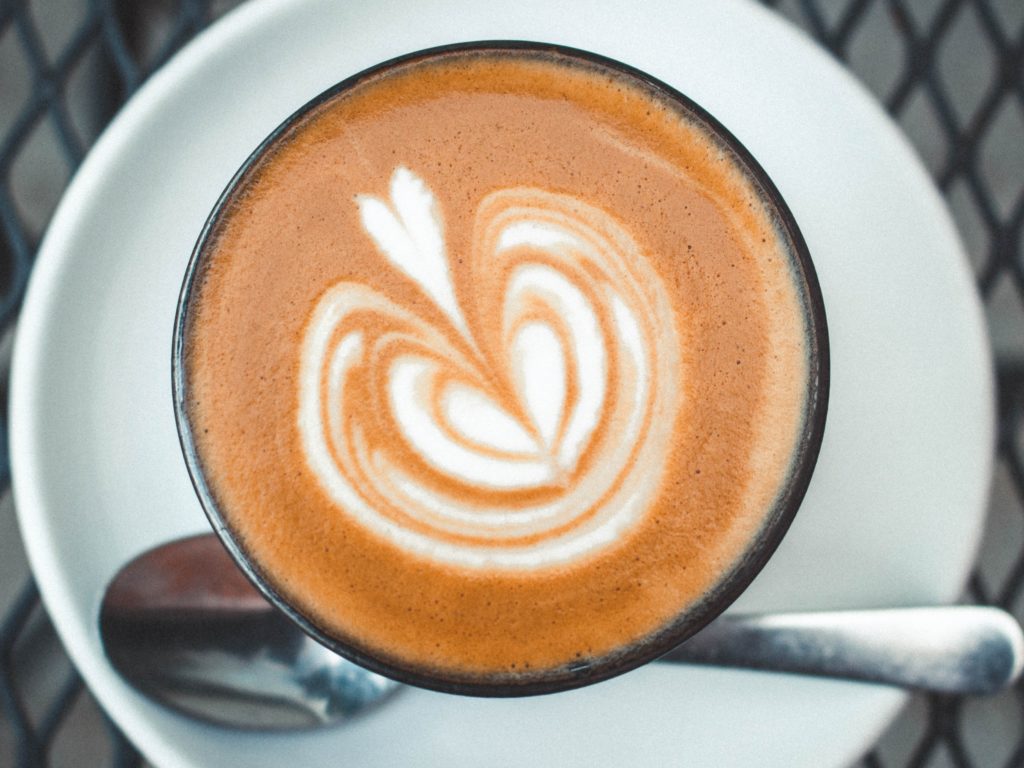Frothing or texturing milk for coffee is an art form just like perfecting the extraction of your espresso.
It might seem intimidating but with the following tips you’ll be frothing / texturing milk like a pro in no time!
PREPARATION TIPS:
- Coffee cups: should be warm. If not, preheat with hot water first.
- Frothing Milk jug/pitcher: should be stainless steel, and kept cold.
- Milk: for the best results, milk should be cold rather than reheating warm or hot milk.
- Remember the milk expands only in the first stages of heating (up to 40°C/104°F).

Frothing or Texturing Milk for Coffee
- Choose the right jug/pitcher size. A smaller jug, to suit 2 cups is quick and reduces the likelihood of having leftover heated milk.
- Pour fresh cold milk into the stainless steel jug/pitcher. Fill the jug to no more than half full (and a minimum of 200ml/1 cup), to allow expansion of the foamed milk.
- Position the tip of the steam nozzle, just below the surface of the milk at the side of the jug (and not touching).
- Tilt the jug to one side at about a 45° angle. This will result in a whirlpool motion of the milk. When adding the steam the noise you will hear is a quiet ‘ssst, ssst, ssst.’ If the tip of the nozzle is too far below the surface of the milk, you will hear a ‘howling’ sound, or a ‘screeching’ sound if the wand touches the side of the jug.
- When the milk begins expanding and you have some foam, slowly move the jug down so that the air is drawn into the milk. Add steam only in small amounts to create tiny bubbles and velvety foam. As the volume of your milk and foam increases, hold the jug upright and continue to heat the milk with the wand just off the bottom of the jug, tapping the side of the jug as you go, to feel the heat increasing (don’t use the base of the jug to test the temperature as the base is heavier and will give you a false reading).
- If using a thermometer, heat until you reach 60°C/140°F then quickly turn off the steam. The thermometer will then rise a further 5°C/41°F once the steam is turned off. 65°-70°C/149°/158°F is the ideal temperature to serve. Over 70°C/158°F is heading for over heated, boiled milk.
- The foam should be dense with fine bubbles. Swirl and tap the base of the jug on the bench to collapse any large bubbles within the bulk of the milk. Immediately clean the steam nozzle with a clean damp cloth and purge to release any milk sucked up the nozzle.
- Slowly pour the silky smooth, foamed milk into the centre of the espresso shot. This will form a marbleisation of milk foam, creamy milk and espresso coffee. Always pour the frothy coffees first (cappuccino, lattes, hot chocolates, mochas)
- Do not reheat large amounts of leftover milk. It not only tastes awful but can also be a health hazard. Only very small amounts can be reheated, when topped up with fresh cold milk.
FACT: The higher the fat content of the milk – the creamier the froth with be. Low fat milk makes fluffy, airy foam; position your steam wand deeper in the milk to reduce aeration. Soy milk also produces thick, fluffy foam, and should not be heated beyond 55°C/131°F to prevent curdling. Check out this post on how to choose the best milk for your coffee.
When you first begin learning how to create milk-based coffees, it can feel like you’ll never be able to achieve that perfect silky-smooth texture or get the temperature right.
But remember: with everything, practice makes perfect. Follow these steps and you’ll find that you soon start to master this challenging skill.
And then, when you’ve done this, you’ll be ready to begin the exciting journey of milk pours and latte art.






